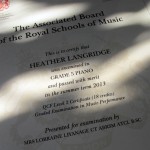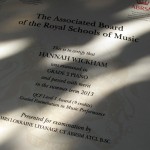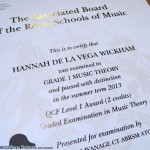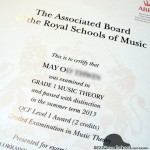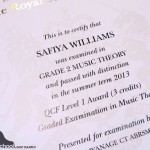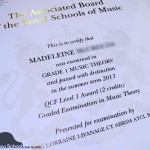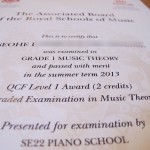Our students have achieved a fantastic set of results at their recent Summer ABRSM exams. Congratulations to students – and parents – for the consistent hard work and sustained effort over the past academic year. We think your playing is sounding brilliant and look forward to continued success in the next school year.
Blog
Summer Piano Lessons at Pellatt Road
Rate: £25/30 minutes, £50/60 minutes
28 August At Pellatt Road
10.00 – Callum (1 hour)
11.00 – Josheela
11.30 Blakes (1.75 hours)
1.15 Rafael (paid)
31 August At Pellatt Road
09.30 Safiya
10.30 – Eseohe
11.00 – Nicole (Mock Exam, please print & bring the blank mock exam form to this session) (to pay)
2 September At Pellatt Road
3pm – Vacant
3.30pm Hannah (to pay)
3 September at Pellatt Road
4.45pm – Edie (Mock Exam, please print & bring the blank mock exam form to this session) (to pay)
School trip to Handel House Museum, October 28th 2013 (Half-term)
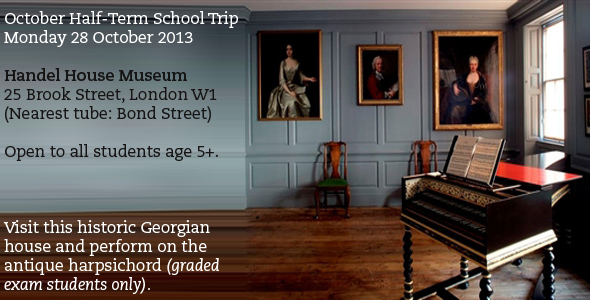
Our 2013 School Trip will be a visit to Handel House Museum at 25 Brook Street, London W1. This was the home of composer George Frederic Handel from 1723 until his death there in 1759, and the place where he wrote some of his most famous music, including the ‘Messiah’, the coronation anthem ‘Zadok the Priest’, and the ‘Music for the Royal Fireworks’.
Step back in time as you leave the busy streets of Oxford Street and are transported into the 18th Century. Here’s one of Handel’s famous harpsichord pieces, the Passacaglia in G minor in a rather cheesy video of a harpsichord war between Scarlatti and Handel!
[youtube=http://www.youtube.com/watch?v=DiMZ4QQnQNU]
The event is open to students age 5+ plus one guardian/parent. The event is limited to 10 performers due to the size of the performance space. Parents are also welcome to drop off and collect around 75 minutes later.
Graded exam students are welcome to play the harpsichord. Bring a Baroque piece. Your teacher will advise on a suitable piece for performance. Non-graded exam students are welcome to come as observers.
Our visit included a full tour of the house in the company of a cheerful and enthusiastic guide, who had plenty of stories and anecdotes to amuse the children; dressing up in Georgian costume; and – the highlight – a chance to play this beautiful reproduction 18th-century Ruckers double manual (two keyboards) harpsichord.

For those studying Baroque repertoire, right from Grade 1, it is important to understand what kind of instrument this music was written for. Introducing Baroque repertoire to children is a chance to explain that the modern piano they are learning on is very different from a Chopin, Beethoven, Mozart or Bach-era instrument. It is also an opportunity to explain the evolution of the piano from its beginnings in the early part of the 18th century, and to find out more about other keyboard instruments. I also believe that an understanding of how the harpsichord, or spinet, works, and sounds, is crucial to one’s understanding of Baroque keyboard music. For example, composers such as Handel and Bach, and even Mozart, were writing for an instrument with a much smaller range (4 to 5 octaves). Ornamentation and other decorative features were often used to create sound to make up for the fact that the harpsichord has very limited sound ‘decay’ – unlike the piano – as well as to create the illusion of a forte.
Please note that flash photography is not permitted in the Museum. 

